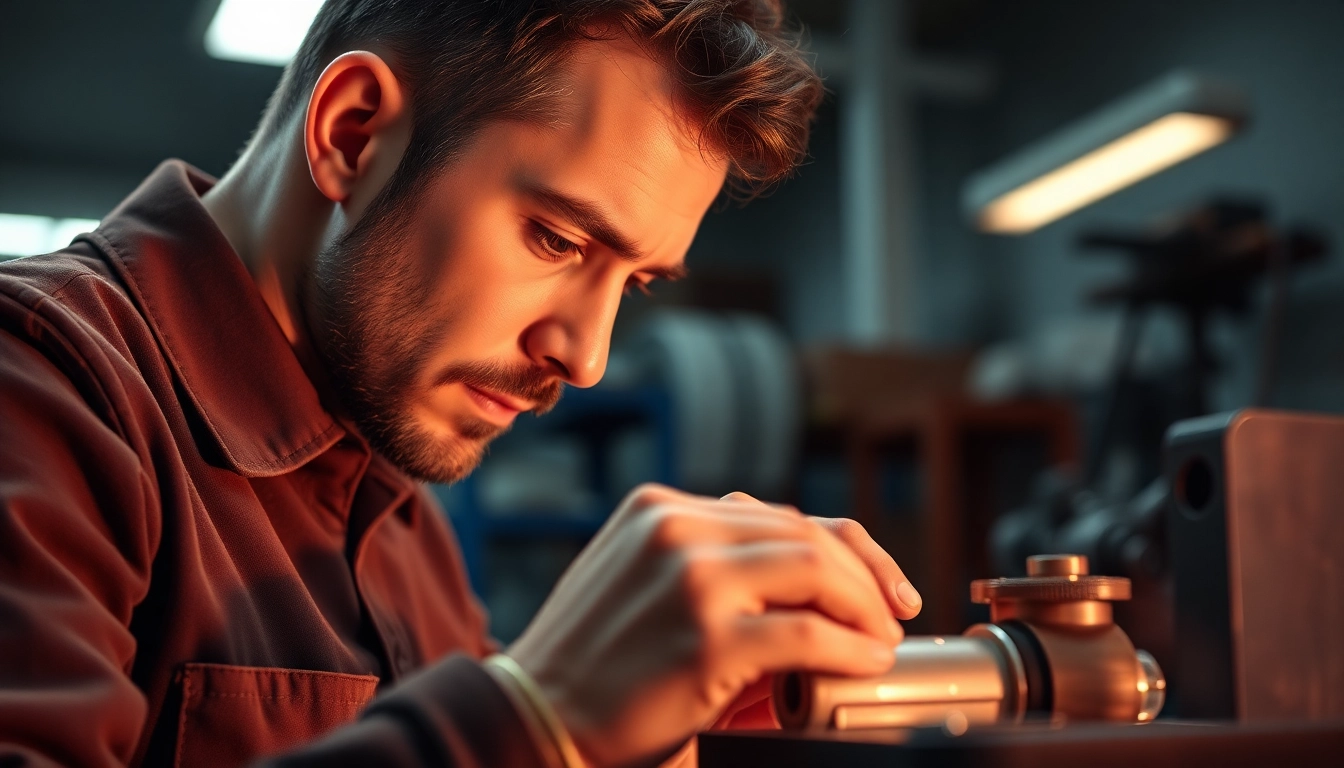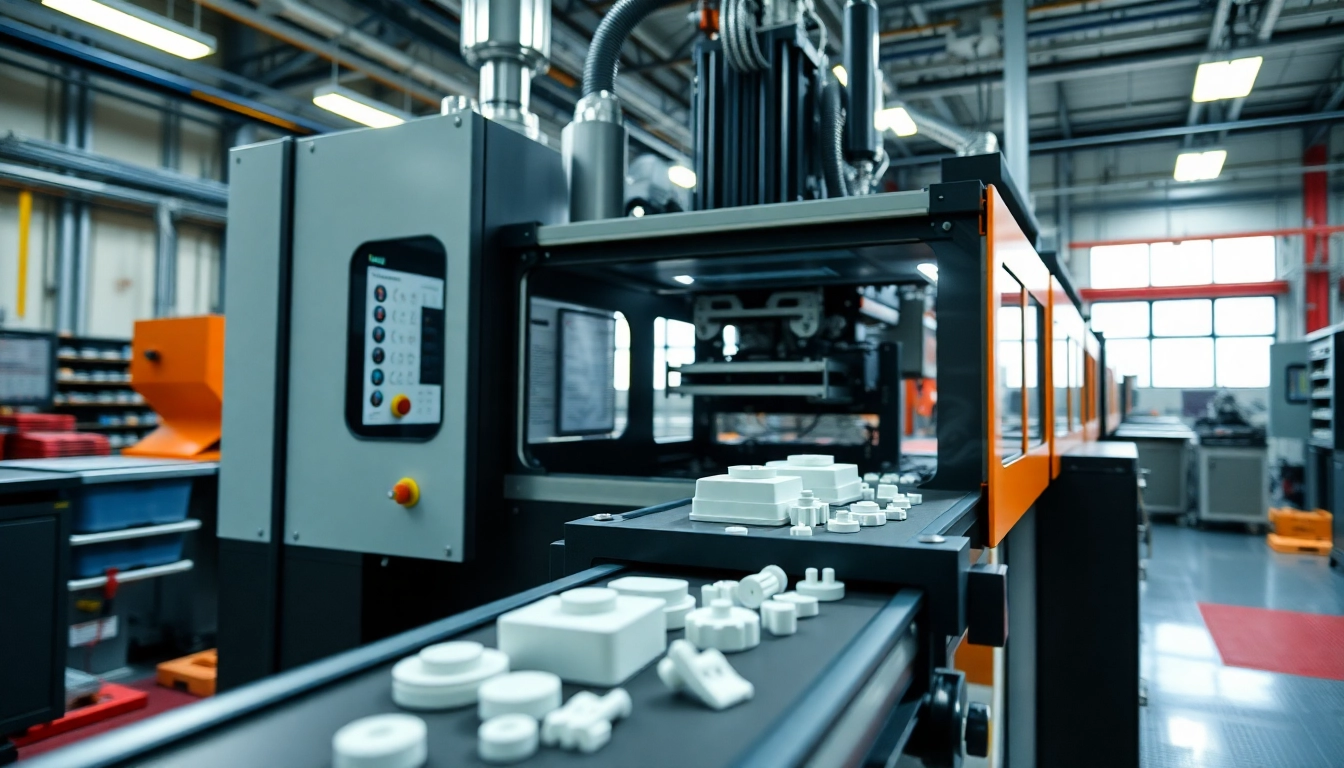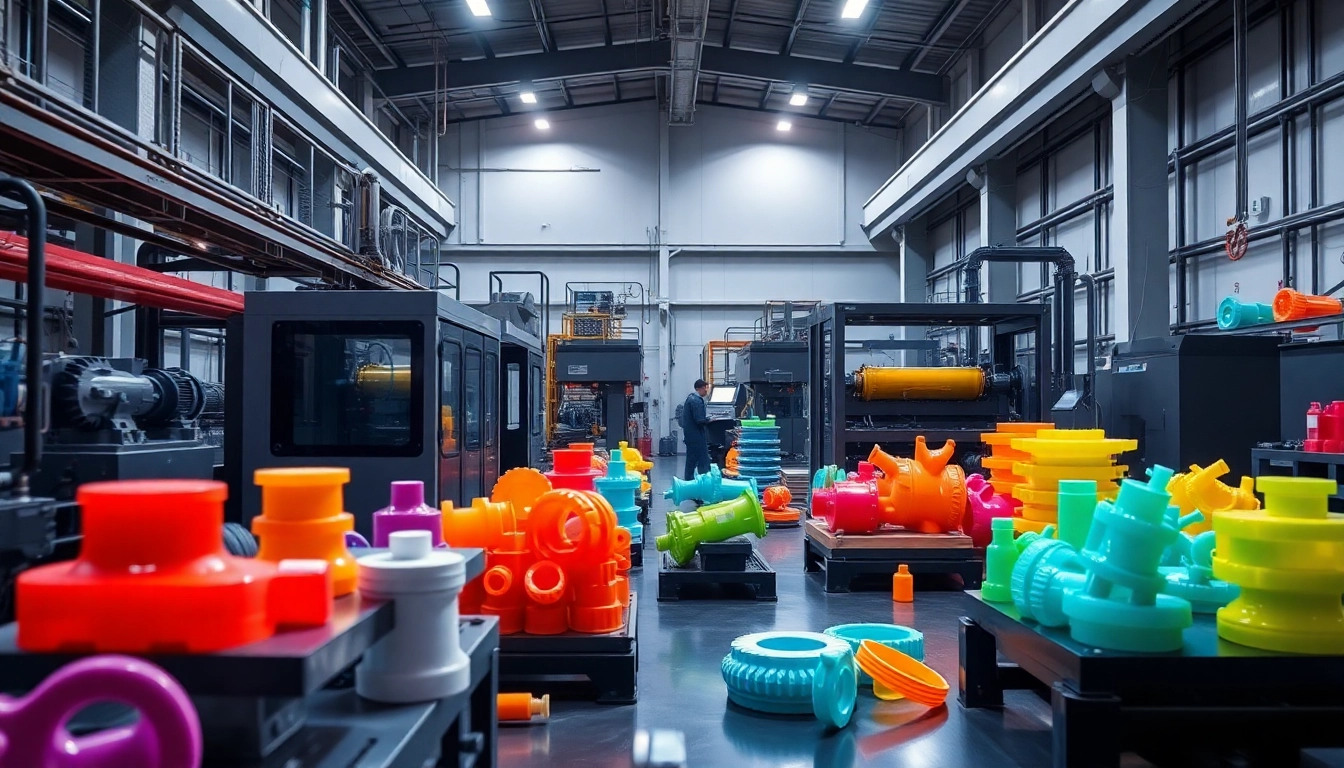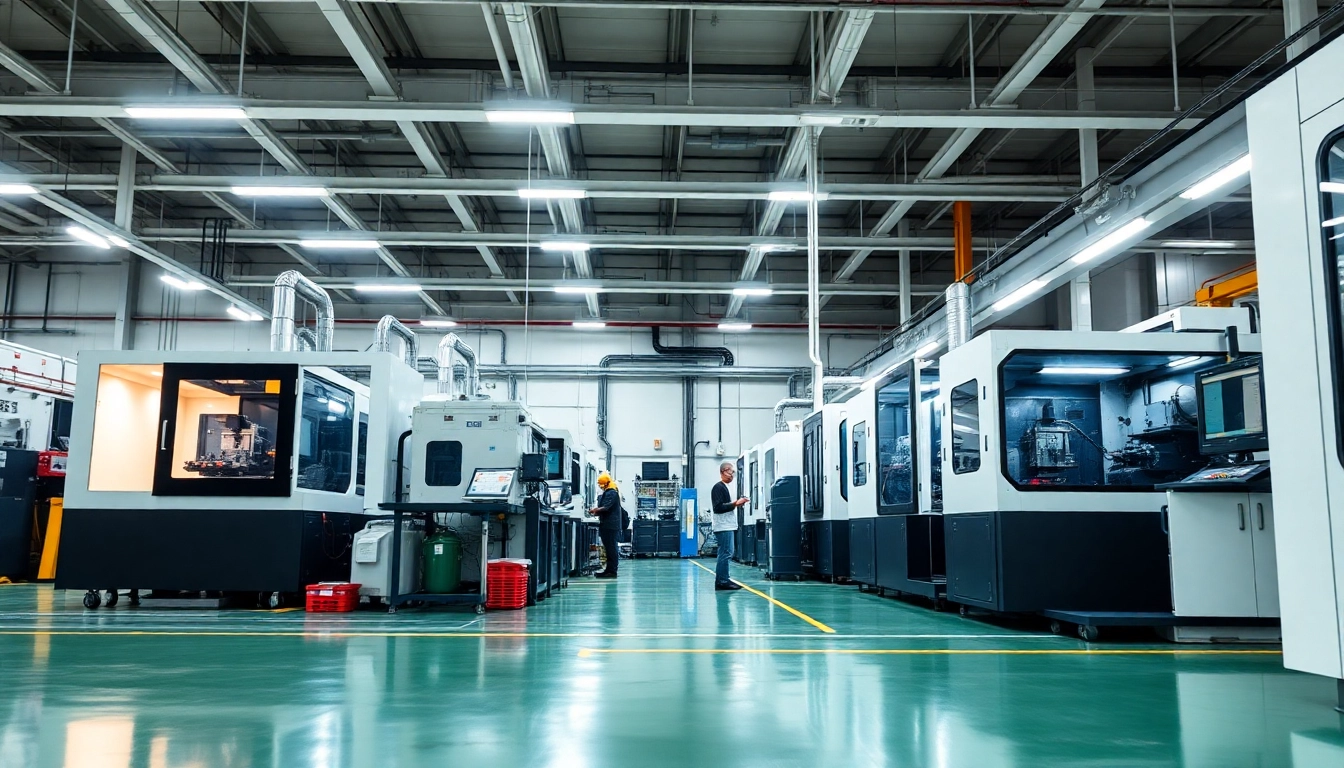In the competitive landscape of manufacturing, the role of a mold maker for injection molding stands as a cornerstone for producing high-quality plastic components. With the increasing demand for precision and efficiency, understanding the intricacies of mold making becomes essential not only for manufacturers but for any business aiming to integrate injection molding into their production process. This comprehensive guide delves deep into the pivotal aspects of mold making, providing insights into its importance, the selection process for a reliable mold maker, the step-by-step molding process, the common challenges faced, and future trends shaping the industry.
Understanding the Role of a Mold Maker for Injection Molding
The Importance of Precision in Mold Making
Mold making for injection molding requires an exceptional level of precision. In this context, precision refers to the accuracy in dimensions, surface finish, and overall quality of the mold itself. It is crucial for ensuring that the final products meet the exact specifications required for their intended use.
Precision is vital in several areas. Firstly, the dimensional accuracy of the mold impacts the fit and functionality of the injected parts. Molds that are crafted inaccurately can lead to excessive wear on machinery, higher production costs due to scrap materials, and, ultimately, dissatisfied customers if parts do not meet industry standards.
Moreover, precision influences production speed. Molds that fit together seamlessly allow for faster cycle times, which is particularly important in high-volume production environments. Utilizing sophisticated CNC machines and EDM (Electrical Discharge Machining) techniques plays a vital role in achieving these high precision levels.
Types of Molds Created by Mold Makers
Mold makers are capable of producing several types of molds for different applications. The most common types include:
- Single-Cavity Molds: Designed to produce one part per cycle. Ideal for low-volume production where part complexity is high.
- Multi-Cavity Molds: These molds can create multiple parts in one cycle, increasing efficiency and reducing cost for high-volume production.
- Family Molds: Enable the production of different parts in the same cycle, allowing for greater versatility.
- Insert Molds: Allow for the inclusion of additional materials or components into the molded part, which is particularly useful in multi-material applications.
Each mold type has its specific manufacturing requirements and applications, emphasizing the need for a mold maker who understands the unique challenges and technologies involved in each category.
Key Skills Needed to Be a Successful Mold Maker
To thrive as a mold maker for injection molding, several expertise areas and skills are essential:
- Technical Proficiency: Mastery of CAD software, CNC machining, and EDM technologies plays an integral role in creating detailed mold designs and executing them with precision.
- Problem-Solving Skills: Mold making involves frequent troubleshooting of design and production challenges, requiring mold makers to think critically and creatively.
- Attention to Detail: Every dimension and detail must be scrutinized to ensure the quality of the final product meets the necessary standards.
- Knowledge of Materials: Understanding the properties of different plastics and metals aids in selecting the appropriate materials for molds and ensuring compatibility with the intended production process.
How to Select the Best Mold Maker for Your Project
Evaluating Experience and Expertise in Injection Molding
When searching for a mold maker, assessing their experience and expertise is critical. An established mold maker typically has a proven track record and a portfolio that reflects their capabilities.
Factors to consider include:
- Industry Experience: The mold maker’s experience in your specific industry can enhance communication and understanding of your project requirements.
- Technical Skills: Ensure they utilize advanced technology and machining techniques to guarantee precision.
- Client Testimonials: Feedback from former clients provides insight into the mold maker’s reliability and quality of work.
Understanding Communication and Collaboration with Your Mold Maker
Effective communication is the backbone of a successful partnership with your mold maker. It is important to have open lines of communication to discuss design aspects, timelines, and any potential challenges that may arise.
Establishing a collaborative workflow will enable both parties to put forth their best suggestions and insights throughout the development process. Regular updates and feedback sessions ensure that both sides are aligned on the project’s objectives and can help mitigate risks before they escalate.
Cost Considerations When Hiring a Mold Maker for Injection Molding
Understanding the costs associated with hiring a mold maker is key to making informed decisions. Costs can vary significantly based on several factors, including:
- Mold Complexity: Intricate designs require additional programming and machining time, which translates into higher costs.
- Material Selection: Different materials (steel, aluminum, etc.) possess varying cost structures that can affect the budget.
- Production Volume: Higher volumes can often reduce the per-unit cost but increase the overall investment initially.
By understanding these elements, manufacturers can better plan their budget and negotiate more effectively with mold makers.
The Mold Making Process: A Step-by-Step Guide
Initial Design Considerations for Injection Molds
The foundation of any successful mold-making process lies in the initial design phase. During this stage, several key factors must be considered:
- Part Design: The design of the part directly influences the design of the mold. A thorough assessment must be done, considering support features, draft angles, and surface finishes.
- Mold Materials: Selecting the appropriate materials for the mold affects the durability and longevity of the mold, as well as the quality of the finished product.
- Production Requirements: Understanding the total production volume and cycle times will inform design decisions and material selection.
Machining Techniques Used in Mold Production
Once the design is finalized, the next key step involves precision machining. Different techniques are employed at this stage, including:
- CNC Machining: This method allows for high precision in cutting and shaping mold cavities, effectively translating designs into real-world forms.
- Electrical Discharge Machining (EDM): EDM is particularly useful for creating complex geometries and achieving fine finishes.
- Injection Molding Simulation: Testing how materials will behave during the actual injection molding process is crucial before fabrication.
Integrating these methods facilitates an efficient workflow that maximizes accuracy while minimizing errors during production.
Final Testing and Quality Assurance Procedures
After the mold has been fabricated, extensive testing and quality assurance are essential to validate its performance. Quality assurance procedures typically include:
- Dimensional Inspection: Ensuring that all dimensions meet the specified tolerances to prevent manufacturing defects.
- Functionality Testing: Conducting test runs with production materials to identify potential issues before full-scale production.
- Maintenance Checks: Performing checks on mechanical components of the mold to ensure everything operates smoothly.
Investing time in quality assurance can significantly reduce the risk of costly mistakes during production.
Common Challenges in Mold Making for Injection Molding
Addressing Design Flaws and Errors in Molds
Even with the best processes, design flaws can occasionally occur, leading to delays and increased costs. Common issues include:
- Inaccurate Dimensions: Miscalculations during the design phase can lead to improper fit and function.
- Inadequate Cooling: Mold designs that do not allow for effective cooling can result in longer cycle times and uneven part quality.
- Material Selection Errors: Using the wrong materials impacts the durability and performance of the mold.
Implementing robust design review processes and utilizing simulation software can help identify these flaws early in the project.
Managing Production Timelines Effectively
Delays in the mold-making process can impact overall project timelines. To keep the project on schedule:
- Detailed Planning: Developing a clear timeline with milestones for each phase ensures accountability and progress tracking.
- Effective Resource Allocation: Allocating adequate resources, including personnel and machinery, ensures that production can proceed without interruption.
- Regular Communication: Maintaining open communication among the project team members can help quickly address any arising issues.
Strategies for Overcoming Budget Constraints
Budget limitations often present challenges in mold making. To address these constraints effectively:
- Prioritization: Focus on essential features and cut out non-critical elements that may escalate costs.
- Material Substitution: Exploring less expensive materials without compromising quality can help control costs.
- Negotiating with Vendors: Building strong relationships with suppliers can lead to better pricing and terms.
By strategically managing finances, companies can achieve a successful outcome within their budget limits.
Future Trends in Mold Making and Injection Molding
Emerging Technologies Impacting the Mold Making Process
The mold making industry is continually evolving, particularly with the advent of new technologies such as:
- 3D Printing: Also known as additive manufacturing, 3D printing is increasingly used for rapid prototyping and even small-scale mold production.
- Automation and Robotics: Integrating robotics into the mold-making process can significantly enhance efficiency and reduce labor costs.
- Advanced Simulation Software: Simulation technologies allow for better testing of mold designs before fabrication, reducing time and costs.
Staying abreast of these emerging technologies can place one at the forefront of the industry.
The Growing Importance of Sustainability in Mold Production
Sustainability is a growing concern in the manufacturing sector. Therefore, mold makers are increasingly adopting eco-friendly practices by:
- Using Recyclable Materials: Selecting materials that can be recycled after their life cycle reduces environmental impact.
- Energy Efficient Practices: Implementing energy-efficient machinery and processes minimizes carbon footprints.
- Reducing Waste: Employing lean manufacturing principles can help eliminate waste and optimize resource use.
By focusing on sustainability, mold makers not only enhance their corporate responsibility but also meet the evolving preferences of environmentally conscious consumers.
Adapting to Market Demands: Customization and Low-Volume Manufacturing
As markets shift towards customization and shorter product life cycles, mold makers must adapt to these trends by:
- Offering Flexible Solutions: Crafting molds that allow for easy modifications supports client demands for product variation.
- Facilitating Low-Volume Production: Utilizing technologies that support low-volume manufacturing increases competitiveness in niche markets.
Flexibility and responsiveness to changing market demands will be crucial for long-term development in mold making.
Conclusion
The role of a mold maker for injection molding is multifaceted and vital for the production of quality plastic components. From understanding the intricacies involved in mold making to selecting the right professionals and leveraging advanced technologies, businesses must be proactive in optimizing their mold-making strategies. By doing so, they will not only enhance their manufacturing processes but also position themselves favorably in an increasingly competitive market.



